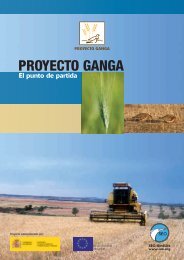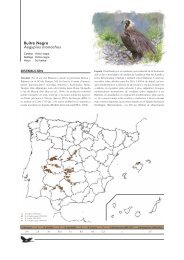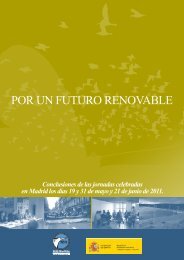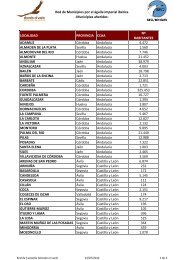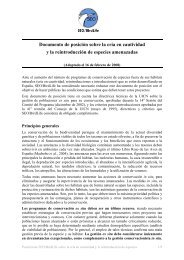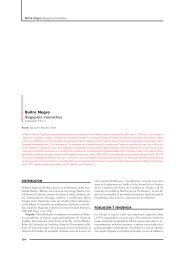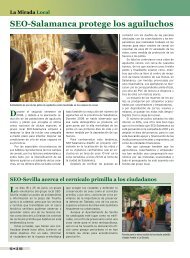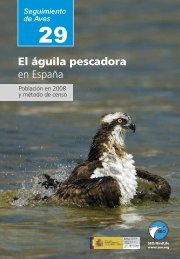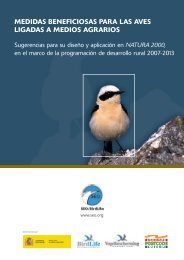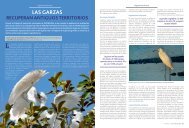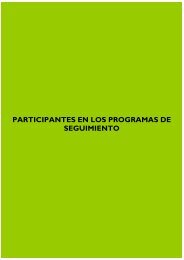La avutarda hubara - SEO/BirdLife
La avutarda hubara - SEO/BirdLife
La avutarda hubara - SEO/BirdLife
Create successful ePaper yourself
Turn your PDF publications into a flip-book with our unique Google optimized e-Paper software.
Summary<br />
In all cases, the number of birds present in primary habitats is larger than the<br />
number of individuals in secondary areas. The percentage of birds in the latter<br />
has increased as compared to previous censuses; the 1994 rate was 26.70%, and<br />
the current value is 40%. Therefore, the increase in population in marginal areas<br />
which seems directly linked to the loss and degradation of primary habitats<br />
occurred between the mid-1990s study and the most recent one, with the decrease<br />
of suitable area being 162,50 to 145,37 km 2 . Nonetheless, the improvement<br />
in the census efforts on such habitat types during the most recent surveys should<br />
also be taken into account when appraising the results.<br />
The recommendation as regards the census method is to implement multi-line<br />
transects. Endeavouring to this approach would facilitate comparisons with<br />
the large amount of information gathered to date in previous censuses<br />
through this methodology. The new features incorporated into the recent census<br />
campaigns consist of (1) recruiting two census teams to survey the two<br />
main islands simultaneously, thus reducing the overall census period; (2)<br />
enlargement of the study area to include a larger number of secondary habitat<br />
sites occupied by the species.<br />
The conservation status of the Houbara Bustard has been reviewed under the<br />
IUNC Red List criteria (3.1 version) on the basis of the census results. As in the<br />
Red Data Book for Spain’s Birds, the revision has not involved the application of<br />
regional corrections, after the premise that the species population is isolated,<br />
and made up of the individuals of the three main islands where the species is<br />
present. The assessment result is that the species qualifies as “Endangered”<br />
under criterion B1ab(iii)+B2ab(iii).<br />
71



